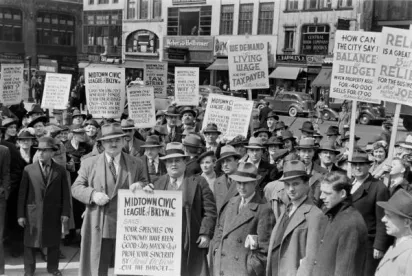Continuing its three-year campaign, “Fight for $15” on November 4, 2015, announced plans for worker strikes and protests at fast food restaurants in 270 U.S. cities on November 10. The protests, timed to occur one year prior to the 2016 presidential election, is calculated to send a message to voters and candidates. Protests will culminate with a march on the November 10 Republican presidential debate in Milwaukee.
While the fast food workers involved in the walk-outs are not represented for purposes of collective bargaining by a labor union, the walk-outs have largely been organized and funded by the Service Employees International Union (“SEIU”). Employers with union contracts who have lived with the possibility of strikes are generally more familiar with the rights and obligations of employees and employers under the labor law than their non-union counterparts. But now that walk-outs and work stoppages are becoming an accepted strategy in the non-union workforce, non-union employers need to know the rules, too. Indeed, over three years of protests, scores of unfair labor practice charges have been filed against non-union employers alleged to have interfered with employee participation in protected activity. Moreover, on November 4, 2015, the National Labor Relations Board (“NLRB”) upheld a decision finding that a St. Louis Chipotle Grill unlawfully discharged an employee because he engaged in fight-for-$15 protests.
“Protected, Concerted Activity”
Under the National Labor Relations Act, employees have the right to engage in group activity for the purposes of “mutual aid and protection.” Thus, whether a union is involved, if two or more employees acting in concert walk off the job to protest work conditions or enforce demands relating to the terms of their employment, the walk-out, or strike, generally is protected concerted activity under the National Labor Relations Act. (Quickie, intermittent work stoppages might not be.) Under these circumstances, it would be unlawful to discipline or discharge (or otherwise disadvantage) employees for walking off the job. It also means that unless the employees have been permanently replaced (discussed below), the strikers are entitled to be returned to their jobs when they make an unconditional offer to do so.
Lawful Employer Responses to Protected Concerted Activity
Employers are not without rights in dealing with protected concerted activity (“PCA”). First and foremost, employers have a right to continue business operations. This can be accomplished by assigning managers or hiring replacement workers to do the work of the employees who walked off the job. If the strike is not caused by an employer unfair labor practice, employers have the right to designate the replacement workers either as permanent or temporary. (If the strike is caused by an employer unfair labor practice, employers have the right to designate the replacement workers only as temporary.)
If replacement workers are designated as temporary, when the strikers offer to return to work, the employer is obligated to lay off the temporary workers and put the strikers back to work.
When the employer designates the replacements as permanent, when the strikers offer to return to work, they are placed on a preferential hiring list. In that situation, the employer is not obligated to lay off the replacements, but when positions open up through normal attrition, the employer first has to offer those openings to the former strikers who are on the preferential hiring list.
Walk-outs in the fast food industry have been short, however, typically rendering the hiring of replacement workers impractical. As a practical matter, employers may have to rely on managers or other employees who are not participating in the strike.
Violence and Other Picket Line Misconduct
Employees lose the protection of the NLRA if they engage in certain improper conduct. This includes intermittent or “quickie strikes.” Generally, strikers lose the protection of the NLRA when they engage in a pattern of striking for short periods, returning to work briefly, and then striking again. By engaging in this type of conduct, strikers effectively deny the employer the ability to run its business either by relying on its regular employees or by hiring replacements. The NLRA does not prevent the employer from issuing discipline or discharging employees who participate. However, before taking action, employers should consult counsel and be absolutely certain the particular job action is unprotected.
Other activities that are unprotected include stay-ins or sit-down strikes. A stay-in or sit-down strike occurs when employees refuse to work and also refuse to vacate the employer’s premises. Strikers seek to force the employer to accede to their demands by bringing operations to a halt, preventing the employer from operating. This type of trespasser activity generally is unprotected.
Slow-downs are another tactic sometimes used to impede production. Work is deliberately performed ever more slowly; the employer cannot conduct business and customers fume. Slow-downs are not protected and can be addressed by discipline or discharge.
Lawful Responses to Unprotected Activity
Strikers, of course, are allowed to picket on public property near their place of employment to publicize a labor dispute. They, however, are not privileged to engage in threats, physical assaults, trespass, or property destruction. When they do, employers have these remedies available:
1. Law Enforcement: The most immediate relief available is to call the police. Just because employees ostensibly are engaged in a strike does not immunize them from prosecution when they commit crimes.
2. State Court Injunction: Another remedy is to seek a state court injunction to prohibit violence. This is particularly helpful when there is mass picketing, obstruction of traffic, and blockages of entrances, and the police have difficulty controlling the situation. In these kinds of cases, employers seek court orders prohibiting further violence or destructive activities and limiting to a reasonable number the number of picketers at a particular location at any given time, so police can assure public order.
3. Employer Discipline and Discharge: If the threats, violence and property destruction are egregious enough, the employees involved lose the protection of the NLRA, which means they can be discharged or disciplined. (However, a full investigation should be conducted before the employer takes action to determine what the employee actually did or said. In addition, investigation of past discipline in similar situations not involving protected concerted activity is important because the rules (under the NLRA) prohibit discrimination against employees who engage in such activity. In other words, if, in the past, an employee who was not participating in protected concerted activity engaged in violence for which he was suspended, an employee who engages in similar violence while partaking in protected concerted activity generally also should be suspended, rather than discharged.) Employees should not suffer greater discipline for their misconduct because it occurs while they engage in activity the law protects.
While there is no bright line for evaluating when misconduct becomes unprotected, some general guides may be kept in mind. For example, simple name-calling, momentary blocking of ingress and egress at employer facilities, and simple trespass onto an employer’s property, without any accompanying destruction or violence, probably will not be sufficient to cause the employee to lose the protection of the NLRA. However, physical assaults, participating in extended blocking of ingress or egress, and property destruction are generally the types of conduct that will cause an employee to lose the protection of the NLRA.






 />i
/>i

